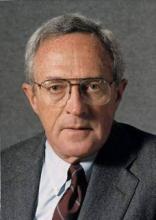In case you didn’t notice, our clinical practice has been reinforced by a entirely new class of performers who have become essential to our daily activities.
They are Advanced Practice Registered Nurses, whose role has evolved over the last 50 years from the Coronary Care Unit nurse with special training in coronary care to an array of well-trained women and men who have received both Bachelor’s and Master’s degrees in Nursing.
As a further extension of their training, many are now going on to achieve a further doctorate degree in nursing after 90 hours of postgraduate classes at certified academic centers and additional clinical experience in a variety of fields, including cardiology. The nurses completing those programs will be certified and licensed as APRNs. They come to our practice with remarkable experience and expertise in arrhythmia and heart failure management, as well as interventional skills, on top of wide experience in the management of patients in critical care units. Their integration into comprehensive and collaborative cardiac care raises challenges to and opportunities for the cardiologist.
A recent survey of large cardiology clinics initiated by the Summit Medical Group assessed the role of the APRN in the care of patients both in hospitals and in clinics. It reported that in many of cardiology clinics surveyed, APRNs provide an expanding role in patient care leading to variable relationships between the patient and the cardiologist. In some settings, the APRNs often function independent of physician interaction, initiating the patients’ entrance into the clinic and managing their follow-up. In other situations, they may be supervised by a cardiologist and their future laboratory studies and therapy are completely managed by the APRN, who functions as a professional associate of a physician. However, in many situations the cardiologist may have little or no contact with the patient.
While the APRN is seeing the patient, the cardiologists often are seeing their own patients or, more likely, are involved with maintaining the electronic medical record or performing or interpreting tests that are usually reimbursed at a fee that is a multiple of that received for a patient visit alone. Much of this is carried out under the heading of “coordinated care” and is managed in a multidisciplinary matrix in which many specialists and APRNs play a role in the care of the patient. In this setting, the doctor has become manager of a diverse group of support staff, including APRNs, and may be increasingly remote from direct patient care. My medical colleagues find the process as a way to increase the patient “pass through.” Many patients presume that the APRN is a reasonable alternative to a busy cardiologist or are interacting with their cardiologist.
As doctors, we are divesting ourselves from the one thing that sets us apart and makes us unique in the health care system; the ability to interact with patients in a comprehensive way. We seem to be on the slippery slope to medical obsolescence, soon to be replaced by staff who can triage our patients to the next appropriate test. Both the patient and doctor seem to have slipped into a Walmart-like world where expedience dominates over skill and shortcuts are the alternative to thoughtful personal physician-patient interaction.
Dr. Goldstein, medical editor of Cardiology News, is professor of medicine at Wayne State University and division head emeritus of cardiovascular medicine at Henry Ford Hospital, both in Detroit. He is on data safety monitoring committees for the National Institutes of Health and several pharmaceutical companies.


